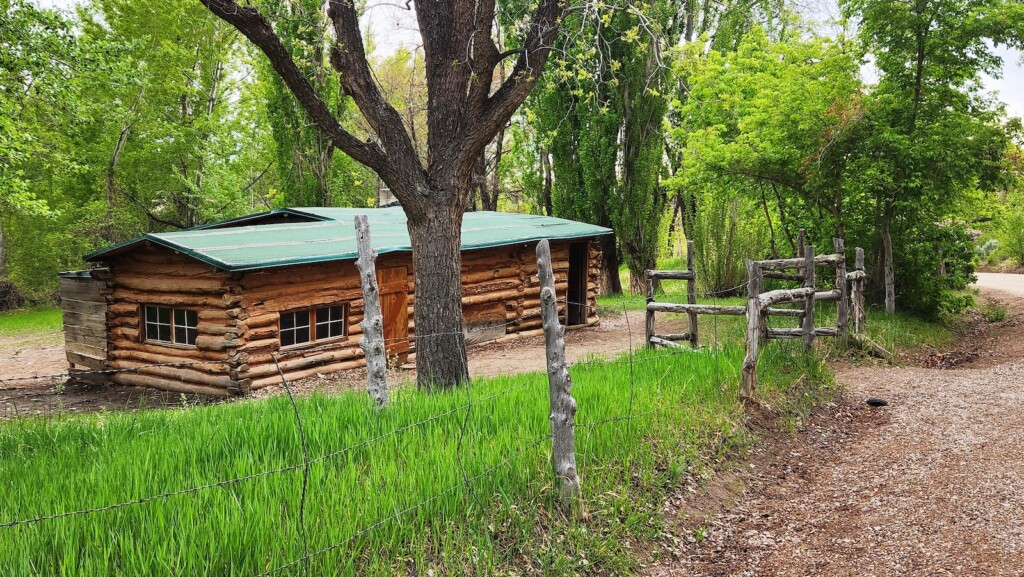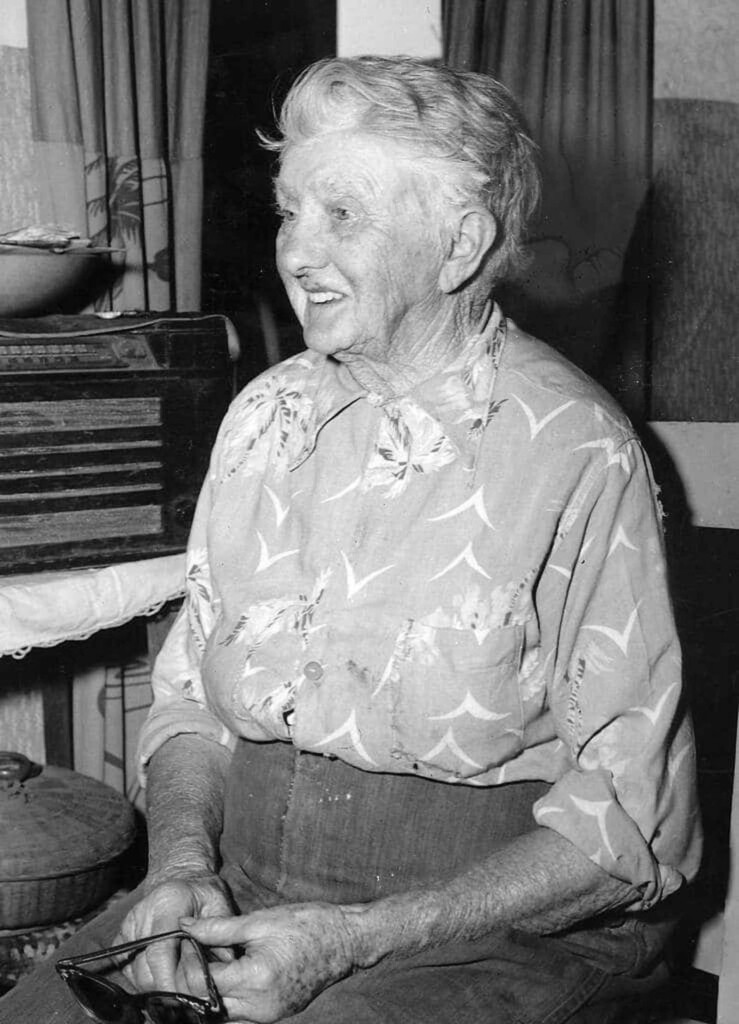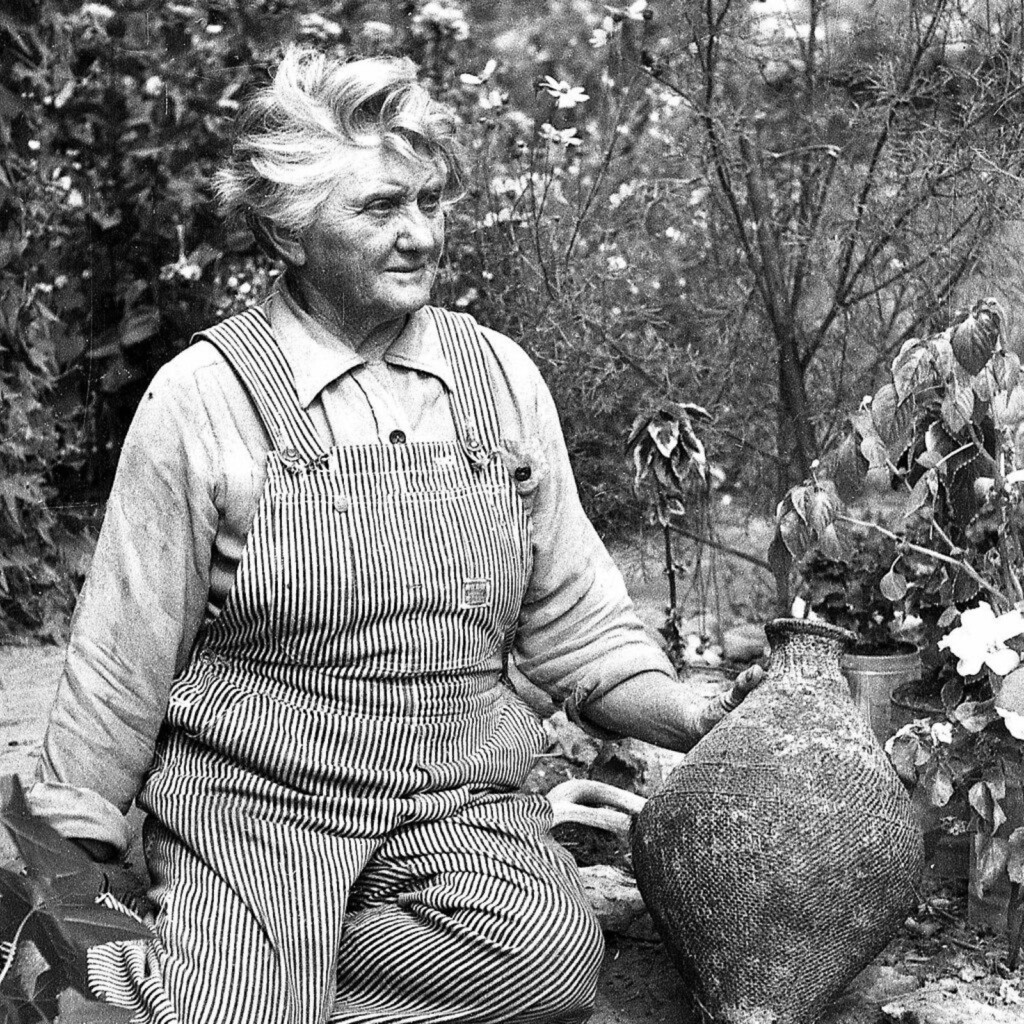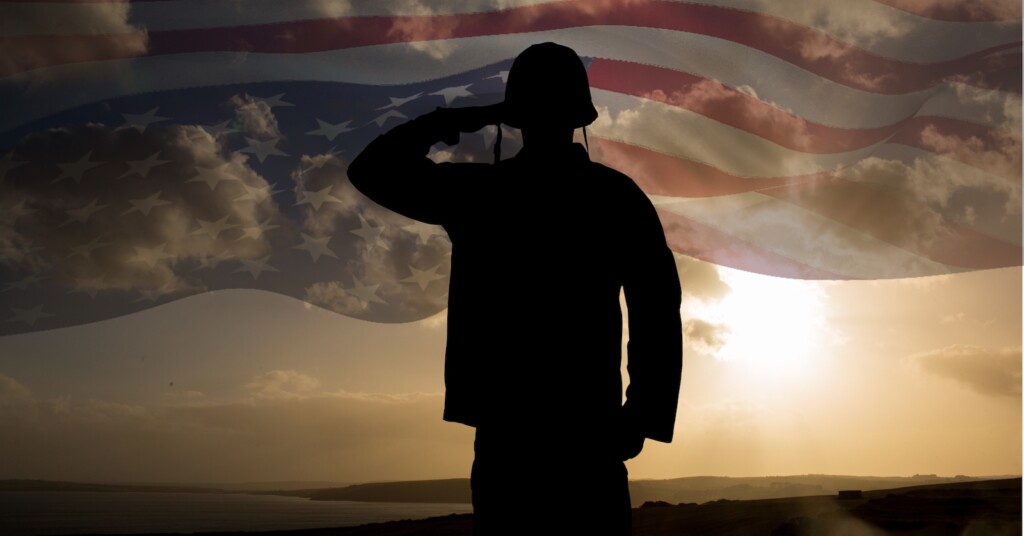In a remote rock canyon deep in the heart of present-day Dinosaur National Monument, sits a lonely wood ranch house that once was home for a stoic woman with outlaw ties named Josie Bassett Morris, who lived there alone for more than 50 years.
Josie’s parents, Herb Bassett and Mary Eliza Chamberlain, an educated couple from Arkansas, arrived in Utah around 1877 with their two daughters — three-year-old Josie and her younger sister “Queen” Ann Bassett in tow.
Little is known about Josie’s early life, but according to one source, “The girls’ parents sent them to an excellent boarding school where they were also given a formal education. By the time Josie Bassett was a young adult, she was well-versed in ranching and liberal arts but opted to become a rancher.” The girls learned to rope, ride and shoot at an early age.
More affluent than most homesteaders of the day, the Bassets established a ranch near the Utah-Colorado-Wyoming border, building their lives in a wilderness so daunting and desolate that it would have chased less intrepid settlers away.
Josie’s father was a cattleman who often did business with outlaws. Josie and Ann were attractive young women, and their romantic dalliances with the likes of Elzy Lay, Will Carver and Butch Cassidy were well known. Josie was the last living connection to Cassidy’s Wild Bunch gang after the others had passed away. Legend says that Cassidy was reportedly killed in Bolivia, but Josie claimed he visited her in 1930, and remained in Utah until the late 1940s.
In 1893, at the age of 19, Josie married Jim McKnight, the first of five husbands, with whom she had two sons; Crawford McKnight and Herbert “Chick” McKnight. Sources claim that she divorced four husbands, “allegedly running one off with a frying pan. A fifth husband died, reportedly of alcoholism, but rumors persist that Josie poisoned him.”
Josie spent most of her early years on her parent’s property, pursuing a life of camping, fishing and hunting. In 1896, powerful cattle barons tried to persuade Josie’s parents to sell their land and sometimes rustled cattle in an attempt to intimidate the family, but the Basset’s close ties with real outlaws proved advantageous and the harassment stopped.

In 1914, at the age of 40, Josie, with help from her son Crawford, built the cabin at Cub Creek near Split Mountain, about 40 miles east of Vernal. Josie chose a blissfully peaceful spot, building not only a home, but an outhouse, root cellar, chicken coop, tack shed, and hundreds of yards of rail fencing to corral a herd of unruly cows. A small creek that trickled from nearby Hog Canyon gave life to the ranch.
Known far and wide as a colorful character, Josie became a bootlegger during Prohibition, making brandy, wine and whiskey. In her 60s she was accused, tried, and eventually acquitted of cattle rustling. She didn’t deny it, claiming it was retribution for the cattle that were stolen from her family, and the charges were dropped.
History records that “During the Great Depression, she supplied food to others in the area, particularly with supplies of beef. She made her own soap, sewed her own clothing, and became known for her prowess at hunting deer, which she often did for her own family and for neighbors.”
With cast-iron determination and unwavering self-reliance, Josie carved a life out of a place so rugged that few could imagine living there even today. Without electricity, hot and cold running water, neighbors, or any way to communicate with others, Josie typified the endurance of turn-of-the-century Utah pioneering. She tilled, plowed and planted, grew a garden and fruit trees, tending to the land and making it prosper under her solitary care. She lived there for the next 50 years, virtually alone.
Signage at the cabin, placed there by the National Park Service, describes Josie’s life on the ranch: “Nearing 40 years of age, divorced and with her children grown, Josie wanted a home of her own. She chose this spot for its plentiful water and good pasture, the natural resources necessary to grow fruits and vegetables and raise cattle. Braided rugs softened the cabin floors, handmade quilts warmed the beds, and Josie’s favorite pictures hung on wallpapered walls. In summer, beds of cosmos, marigolds, and poppies ringed the cabin. Family and friends from Vernal often visited.
“There was always lots of work and never much money, but life at Cub Creek suited Josie’s independent spirit. She lived in this cabin until shortly before her death in 1964 at age 90.”

Josie broke her hip in 1963 and died the following year. She lived life on her terms, surrounded by sandstone bluffs and cottonwood trees in a land both harsh and beautiful.
The Morris ranch site was placed on the National Register of Historic Places in 1986. Josie’s cabin stands today as a testament to the hard work and rugged individualism of a bygone era.






